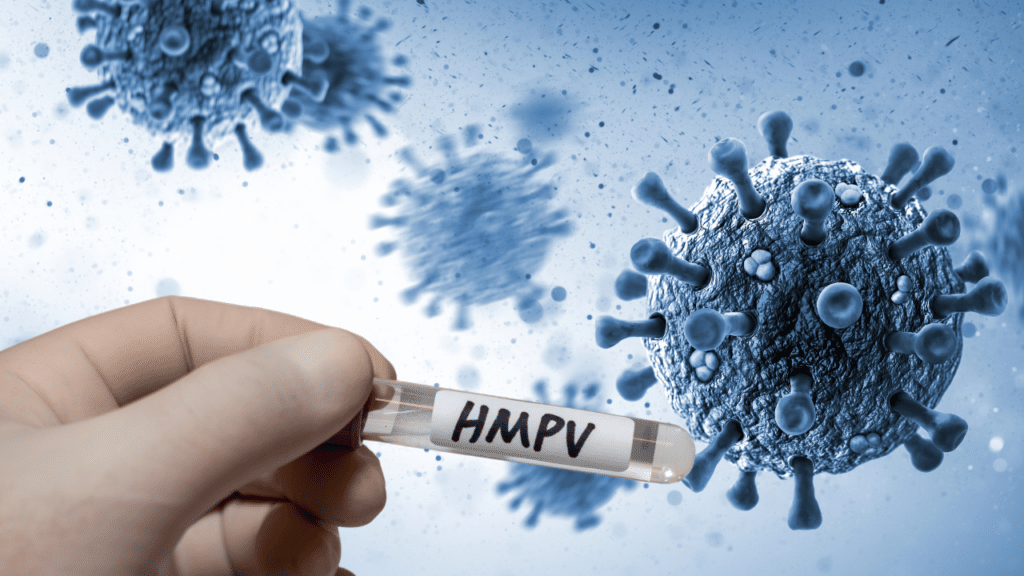In recent years, the spotlight on respiratory viruses has intensified, with COVID-19 and influenza dominating headlines. However, another virus has been quietly making its presence known: Human Metapneumovirus (HMPV). While it may not be as widely discussed, HMPV is a significant cause of respiratory infections, particularly among vulnerable populations. This blog delves into what HMPV is, how it spreads, its symptoms, and how you can protect yourself and your loved ones.
What is Human Metapneumovirus (HMPV)?
Discovered in 2001, HMPV belongs to the Pneumoviridae family, which also includes respiratory syncytial virus (RSV) and parainfluenza virus. It is a leading cause of upper and lower respiratory tract infections, affecting people of all ages. While many cases are mild, resembling the common cold, HMPV can lead to severe complications such as pneumonia, especially in young children, the elderly, and immunocompromised individuals.
Despite its relatively recent discovery, HMPV has likely been circulating for decades, often misdiagnosed as other respiratory illnesses. Its symptoms overlap with those of flu, RSV, and even COVID-19, making it a challenging virus to identify without specific testing.
How Does HMPV Spread?
HMPV spreads primarily through respiratory droplets when an infected person coughs, sneezes, or talks. It can also spread via direct contact with contaminated surfaces or close personal interactions. Unlike COVID-19, which can linger in the air as an aerosol, HMPV is not considered an airborne virus. This makes its transmission mechanism more similar to the flu or common cold.
The virus is highly contagious, especially during the winter and spring months, when respiratory infections are most prevalent. Crowded places, such as schools, daycare centers, and nursing homes, are common hotspots for HMPV transmission.
Symptoms of HMPV
The symptoms of HMPV can range from mild to severe, depending on the individual’s age, health status, and immune system. Common symptoms include:
Mild Cases:
- Cough
- Nasal congestion
- Sore throat
- Fever
- Fatigue
Severe Cases:
- Wheezing
- Difficulty breathing
- Chest tightness
- Bronchiolitis (inflammation of the small airways in the lungs)
- Pneumonia
Most healthy individuals recover within 1-2 weeks, but severe cases may require hospitalization, particularly in high-risk groups such as infants, older adults, and those with weakened immune systems.
Who is Most at Risk?
While HMPV can affect anyone, certain groups are more vulnerable to severe complications:
- Infants and young children: Their immune systems are still developing, making them more susceptible to severe respiratory infections.
- Older adults: Age-related declines in immune function increase the risk of complications.
- Immunocompromised individuals: Those with chronic illnesses, such as asthma, COPD, or cancer, are at higher risk of severe illness.
Immunity and HMPV: Can Vaccines Help?
Currently, there is no specific vaccine for HMPV. However, research suggests that individuals who have received flu shots or COVID-19 vaccines may have some level of cross-protection. These vaccines strengthen the immune system, enabling it to recognize and combat a broader range of pathogens, including HMPV.
A robust immune system is your best defense against severe HMPV infections. Staying up-to-date on recommended vaccinations, maintaining a healthy lifestyle, and practicing good hygiene can significantly reduce your risk of complications.
How to Protect Yourself from HMPV
While HMPV may not be as aggressive as COVID-19, it’s still important to take precautions to minimize your risk of infection. Here are some practical steps you can take:
- Boost Your Immunity:
- Stay current on flu and COVID-19 vaccinations.
- Eat a balanced diet rich in vitamins and minerals.
- Exercise regularly and get adequate sleep.
- Practice Good Hygiene:
- Wash your hands frequently with soap and water for at least 20 seconds.
- Use hand sanitizer when soap and water are unavailable.
- Avoid touching your face, especially your eyes, nose, and mouth.
- Take Precautions in Public Spaces:
- Wear a mask in crowded or poorly ventilated areas.
- Maintain physical distance from individuals showing symptoms of respiratory illness.
- Disinfect Frequently Touched Surfaces:
- Regularly clean doorknobs, countertops, and electronic devices.
- Stay Alert to Symptoms:
- If you or a family member experience persistent cough, fever, or breathing difficulties, seek medical attention promptly.
The Bigger Picture: HMPV and Public Health
HMPV is a reminder that respiratory viruses are a constant threat, especially during colder months. While it may not dominate headlines like COVID-19, its impact on public health is significant. According to the Centers for Disease Control and Prevention (CDC), HMPV is responsible for a substantial portion of respiratory infections each year, particularly among children.
Efforts are underway to develop a targeted vaccine for HMPV, but until then, awareness and preventive measures remain our best tools for combating this virus.
Key Takeaways
- HMPV is a common but often overlooked respiratory virus that can cause mild to severe illness.
- It spreads through respiratory droplets and close contact, making good hygiene essential for prevention.
- Vulnerable populations, including young children and the elderly, are at higher risk of severe complications.
- While there is no specific vaccine for HMPV, maintaining a strong immune system through vaccinations and healthy habits can help reduce the risk of severe illness.
By staying informed and taking proactive steps, you can protect yourself and your loved ones from HMPV and other respiratory viruses. Let’s prioritize our health and work together to minimize the impact of these infections on our communities.
Stay safe, stay healthy, and stay informed!

